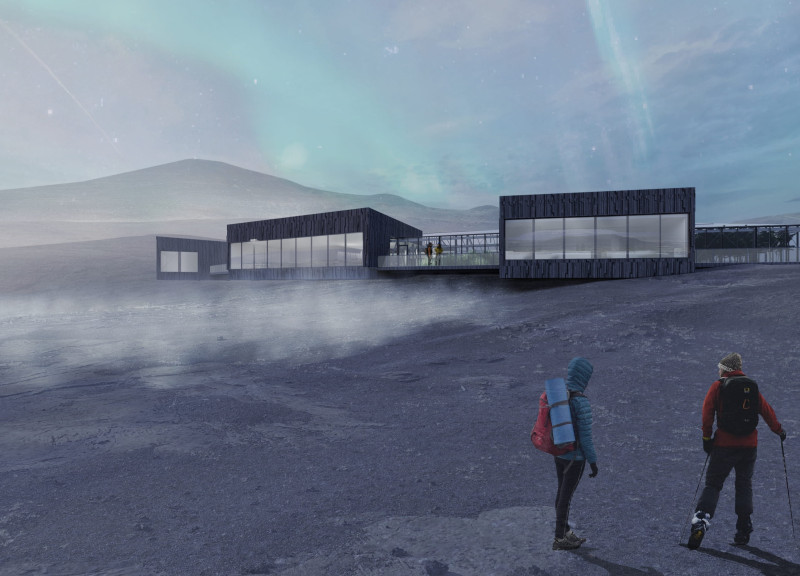5 key facts about this project
The Greenhouse Restaurant is an architectural endeavor in Iceland, located between the Eurasian and North American tectonic plates. Serving as both a dining area and a space to experience nature, the design emphasizes a close relationship with the surrounding landscape. The overall concept draws influences from notable features like geothermal baths, Hverfjall volcano, and Myvatn Lake, aiming to enhance the visitors' connection to the natural environment.
Design Concept
The layout of the restaurant features a dynamic form that incorporates cuts and rotations to create a relationship with the landscape. This design allows for broad views, making the natural surroundings an integral part of the dining experience. The entrances are thoughtfully placed to avoid obstructing sightlines, encouraging guests to immerse themselves in the beauty around them.
Materiality and Texture
Wooden panels adorn the facade, showcasing a rugged texture inspired by the nearby Svartifoss waterfall. This choice of material not only enhances the restaurant's visual identity but also connects it with Iceland's natural elements. The use of wood makes the building appear as if it belongs in the landscape, providing a sense of warmth and familiarity to visitors.
Sustainability Features
Sustainability is a key aspect of the restaurant's design, with an orientation that maximizes natural light to reduce reliance on electric lighting. The sloped roofs can accommodate photovoltaic panels, supporting energy needs through renewable sources. Additionally, the design includes a system for collecting rainwater, repurposing it effectively, and a geothermal heating system to maintain comfort, aligning the building's operations with the surrounding ecology.
Interior Organization
Inside, the layout focuses on a central area that enhances accessibility to scenic views. This arrangement encourages a communal atmosphere, allowing visitors to gather and share their experiences while enjoying the nature outside. The inclusion of greenhouses not only adds visual appeal but also serves to buffer temperature variations, improving overall efficiency.
As sunlight shifts throughout the day, it creates patterns on the wooden facade, enriching the atmosphere and emphasizing the restaurant's bond with the Icelandic landscape.






















































